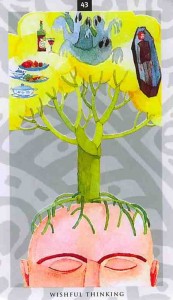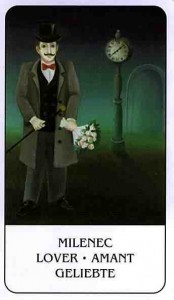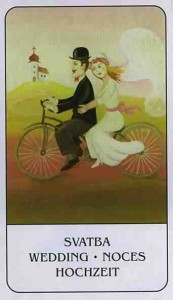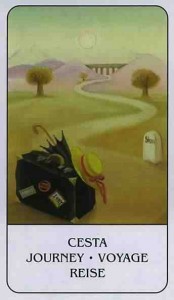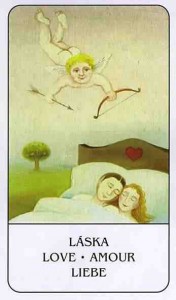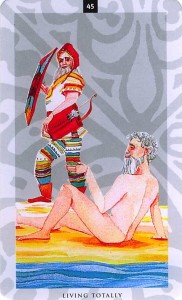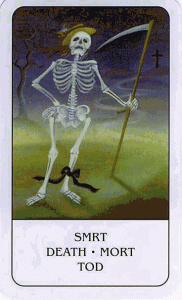Commentary: Osho
Like I said on Tuesday, generally, I don’t ask questions about the future. The future is what I make of it; it will unfold one way or another. Nonetheless, I requested of this deck, “Tell me something about my upcoming week in Quebec.”
Osho tells me: “The thinker is creative with his thoughts— this is one of the most fundamental truths to be understood. All that you experience is your creation. First you create it, then you experience it, and then you are caught in the experience— because you don’t know that the source of all exists in you.” Then he tells the parable of the wish-fulfilling tree.*
The wish-fulfilling tree is the mind. Sooner or later, whatever we think is fulfilled. Unlike in heaven, there is a gap in time between the two— sometimes years. The original thought is generally forgotten. If we observe our thoughts and actions with great care, we will see this connection. Once this is understood, we can change our hell into heaven by consciously changing our mind. This takes great effort. We are responsible for our own world, but there is no need to create. We creators can learn to relax, to let go, to retire from our godhood. “That retirement of the mind is meditation.”
I am not accomplished at meditation. I try to be aware enough of my actions to see the effects they have on others. When things go wrong it is because, instead of paying attention to my actions, I get caught up in a mood I am having.
Whatever happens this coming week is my creation. It is the creation of years upon years of being me, up to the very last minute. There are many things I have done, many things I thought that could have been better. I cannot be in control. I need to let go.
• • •
*Osho relates: Once a man was traveling, accidentally he entered paradise. In the Indian concept of paradise there are wishfulfilling trees, kalpatarus. You just sit underneath them, desire anything, and immediately it is fulfilled— there is no gap between the desire and its fulfillment. You think, and immediately it becomes a thing… These kalpatarus are nothing but symbolic for the mind. Mind is creative, creative with thoughts.
The man was tired, so he fell asleep under a wishfulfilling tree. When he woke up he was feeling very hungry, so he said, “I wish I could get some food from somewhere.” And immediately food appeared out of nowhere— just floating in the air, delicious food. He immediately started eating, and when he was feeling very satisfied, another thought arose in him: “If only I could get something to drink…” …immediately, precious wine appeared.
Drinking wine, relaxed in the cool breeze of paradise under the shade of the tree, he started wondering, “What is happening? Have I fallen into a dream, or are some ghosts around and playing tricks with me?” And ghosts appeared! They were ferocious, horrible, nauseating. He started trembling, and thought arose in him: “Now I am sure to be killed…”
And he was killed.




